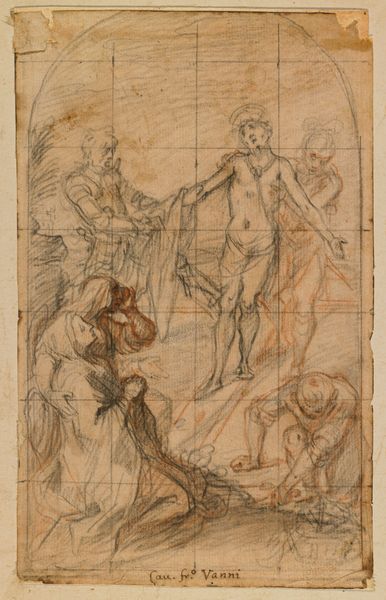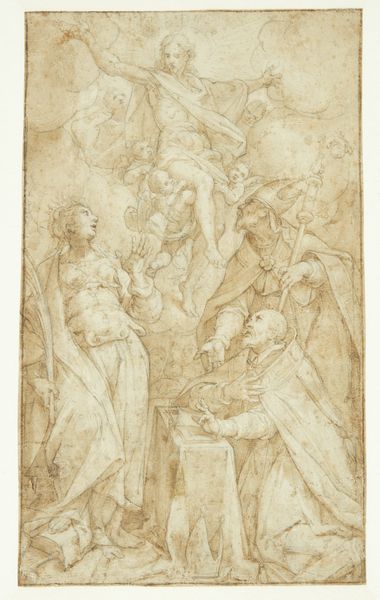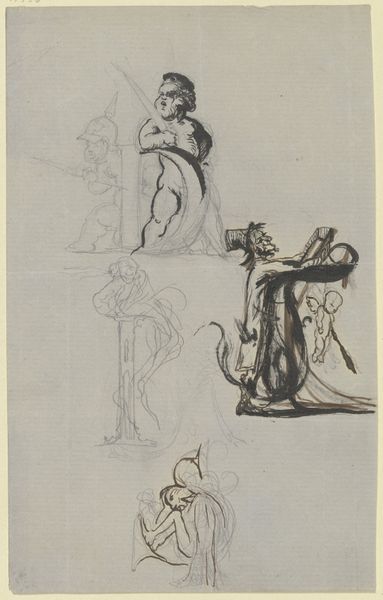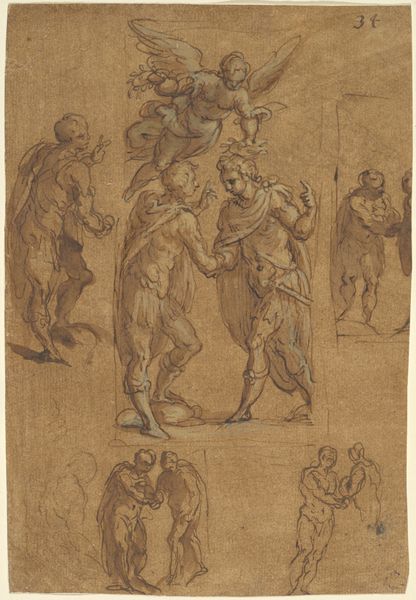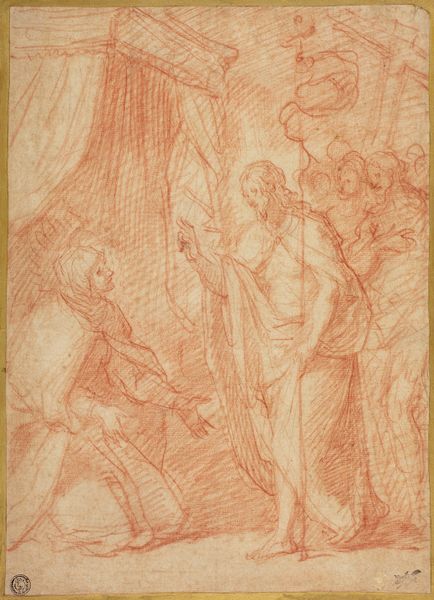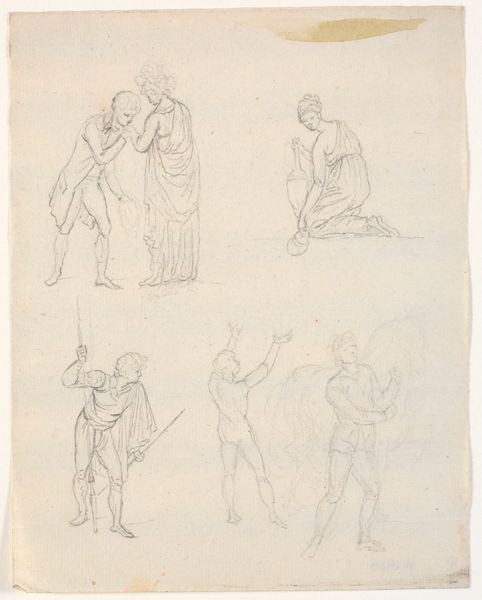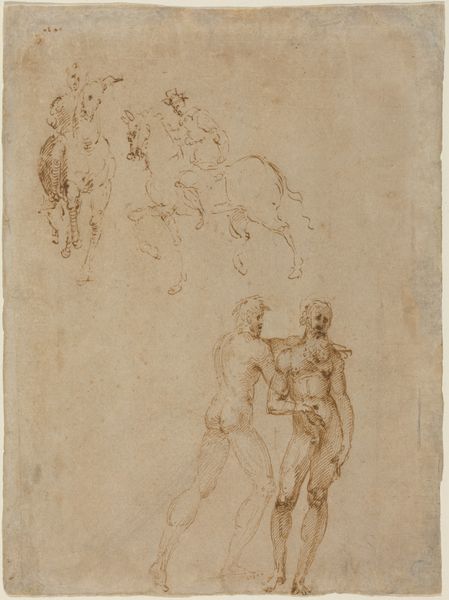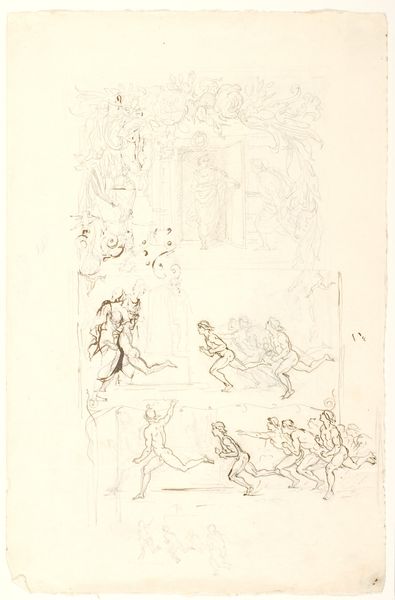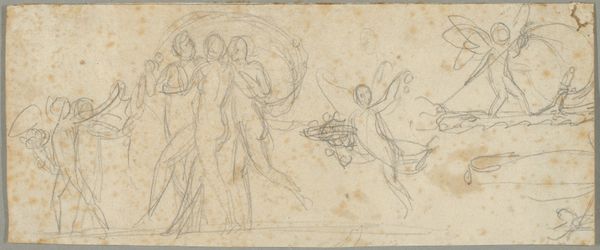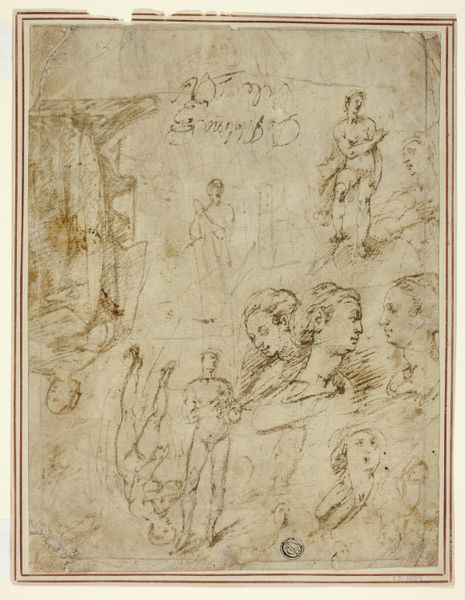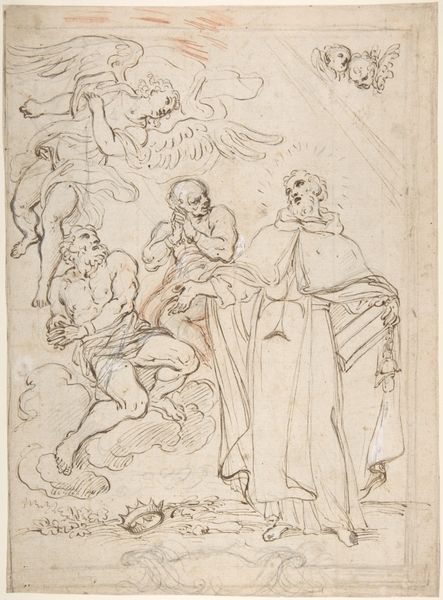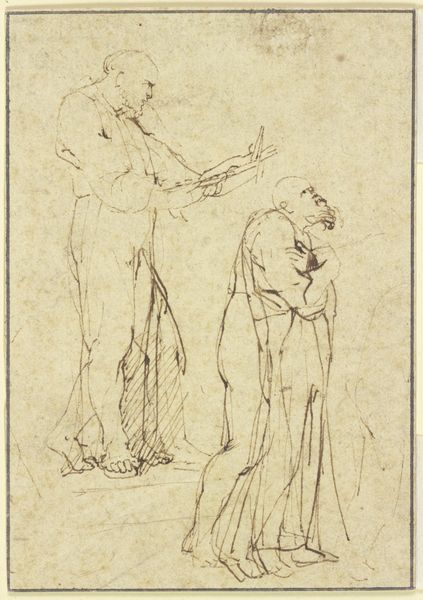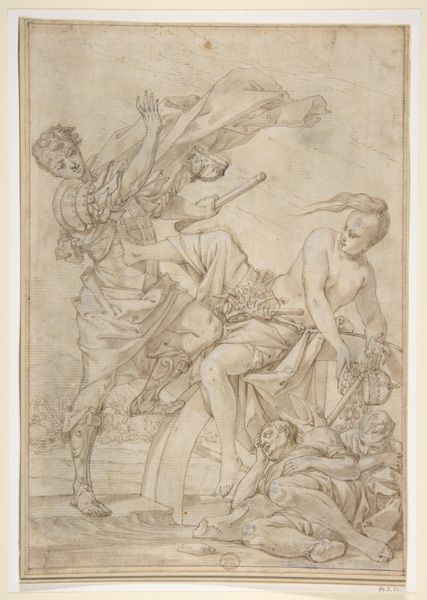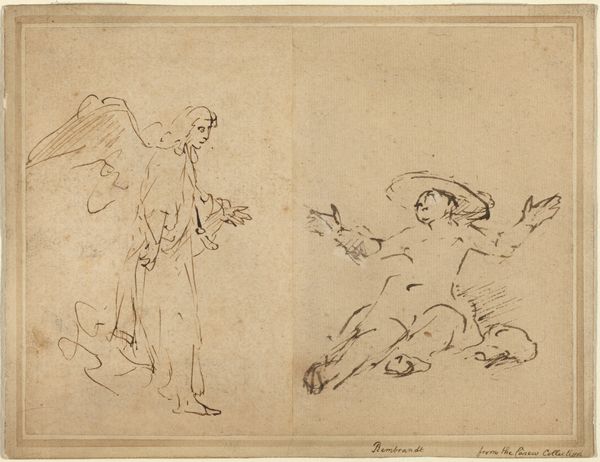
drawing, pencil
#
portrait
#
drawing
#
narrative-art
#
baroque
#
pencil sketch
#
etching
#
figuration
#
pencil
Dimensions: height 199 mm, width 154 mm
Copyright: Rijks Museum: Open Domain
Curator: Here we have George Romney’s pencil drawing, "A Family and Figures in a Ring Dance," dating from between 1744 and 1767. The red chalk lends it a warm, almost fleeting quality. What strikes you most about it? Editor: I’m really drawn to the almost frenetic energy in the lower sketch. There’s a real contrast between the stationary, staged family above, and the swirling figures dancing below. I’m curious, though: what can we tell from Romney’s choice of material, just a pencil sketch? Curator: Absolutely. This isn’t a finished product, right? It's about Romney’s labor: quickly capturing multiple figural arrangements, the economics and efficiency matter. These rapid sketches are tied to social changes. This suggests that Romney likely churned out numerous drawings, and so was exploring narrative themes that might gain future patronage. Look at the means of production: a cost-effective way for an artist to explore a variety of compositions before committing to a more time-consuming oil painting, or commissioned work. Does that frame it differently for you? Editor: It does. Thinking about it as a product, intended to attract patrons, suddenly makes me see the dance not as pure joy, but also perhaps as a performance *for* an audience. So, the material implies that this is linked to marketing practices? Curator: Precisely. We move away from pure artistic expression and think of artistic production in relation to 18th-century market conditions. Notice, even, how economical it is by utilizing the same sheet to depict both scenes, therefore reducing production cost. That tension between ‘high art’ and commerce becomes very interesting when we consider this drawing. Editor: So by focusing on Romney’s process, the materials themselves, we understand more about art consumption during this time. I hadn’t considered artmaking as piecework quite this explicitly! Curator: Exactly. That’s the materialist approach; grounding art historical interpretation to making, materiality, and societal functions.
Comments
No comments
Be the first to comment and join the conversation on the ultimate creative platform.
